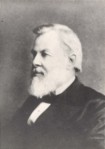Voted the Best Place to See by Condé Nast Traveler.

This story appeared in the Anderson Independent Mail, and we wanted to share it with our blog readers. Hopefully by the end of this year we’ll have some exciting revelations to share with you all about Maria Drayton Gibbes, her connections to Drayton Hall, and the fate of her children.
PENDLETON — Maria Drayton Gibbes was the first person to be buried at St. Paul’s Episcopal Church in Pendleton in 1826.
She was also a respected amateur botanist, mother to the most prominent early faculty member of the College of

Maria Drayton Gibbes of Charleston grew up at Drayton Hall on the Ashley River. She was the first mistress of the Ashtabula historic house in Pendleton during its construction in the 1820s, and historians know she shared a deep knowlege of botany with her eight children. She died around 1826.
Charleston, and the first mistress of the Ashtabula historic house off Greenville Street.
Beyond that, not much is known about Gibbes, who was born into wealth in Charleston but died in relative obscurity in Pendleton. Les McCall, executive director of the Pendleton Historic Foundation, said researchers never located an obituary for her, and her burial was not included among the St. Paul’s churchyard records.
“Why such well-connected people struggled so much …” McCall said. “It remains a mystery.”
On Thursday, McCall will go to Charleston’s Drayton Hall to share what he knows about Gibbes after her move in the early 1820s to the Upstate. She grew up at Drayton Hall, but historians there know little about her.
He said he hopes it is just the beginning of a closer relationship between Ashtabula and Drayton Hall, a National Trust Historic Site.
“Antebellum history is dominated by men,” McCall said, “so not much is known about many of the women.”
Gibbes stands out among the Drayton women because she sparked such a keen interest in science among her children, McCall said. Her field journal — called a “commonplace book” — shows her observations of nature, though it does not reflect her day-to-day life.

Lewis Reeve Gibbes, the eldest child of Maria and Lewis Ladsen Gibbes, was a professor of physics and chemistry at the College of Charleston for more than 50 years, until his death in 1894.
Gibbes’ oldest son, Lewis Reeve Gibbes, is revered at the College of Charleston as an early and influential professor of mathematics, chemistry and physics there. His also studied medicine, and published a catalogue of South Carolina plants by his mid-20s.
A second son, Charles, would move to California where he did surveying work and drew maps in the gold-mining region.
Historians rely on letters, wills, diaries and census reports to construct stories, McCall said, and he has been working with folks at Drayton Hall since October to help fill in the holes on all its early residents. Much of the family’s early written records wound up at the Caroliniana room of the South Carolina Library, McCall said.
Natalie Baker, projects coordinator for Drayton Hall, said she and McCall are working out details on bringing someone from Charleston up to Pendleton later this spring.
“We’ve never been in the Drayton Hall archives,” McCall said.
The fate of the six younger children in the family is largely unknown, McCall said. Two died by the age of 22, and the rest likely moved to Mississippi or Alabama. The Ashtabula estate struggled after both Gibbes and her husband, Lewis Ladsen Gibbes, died in the late 1820s.
“I hope to get some discussion going on what happened to these kids,” McCall said.